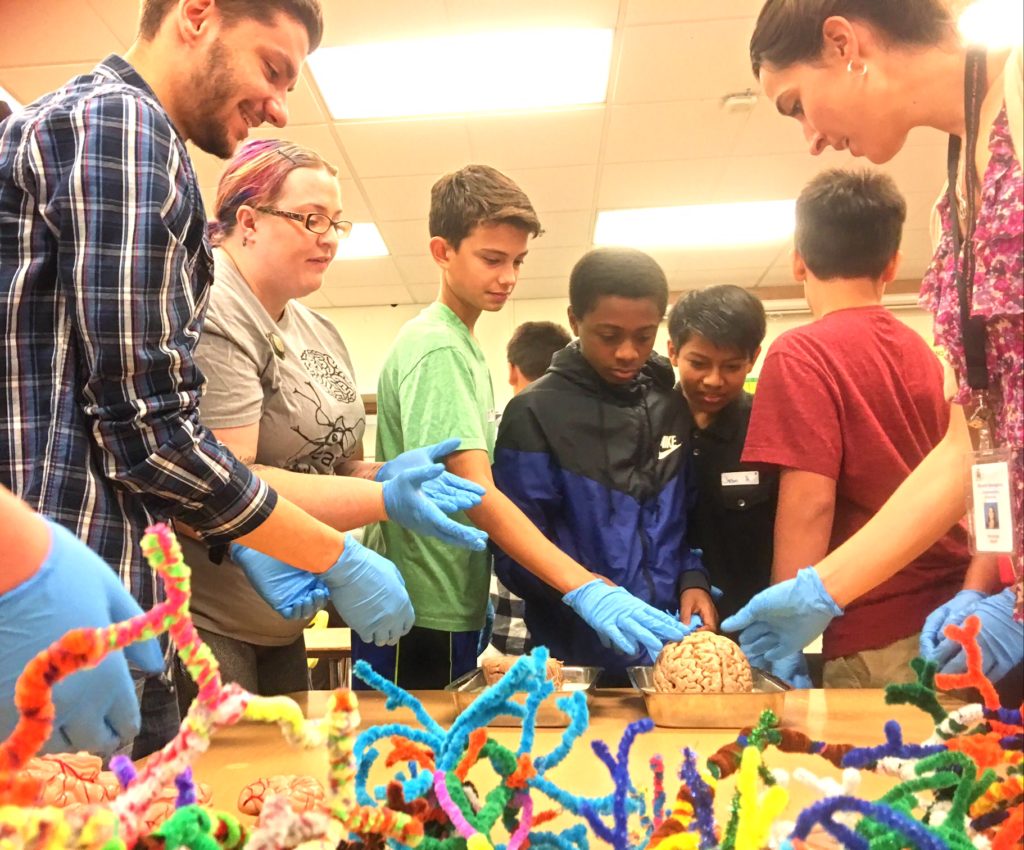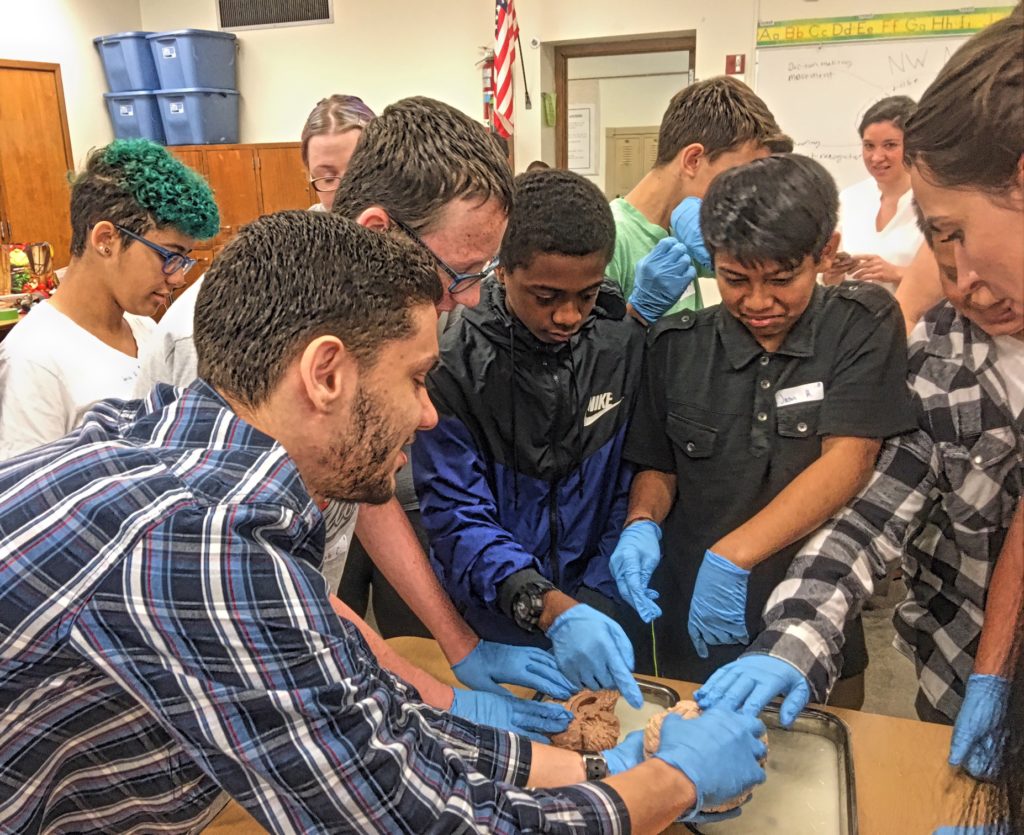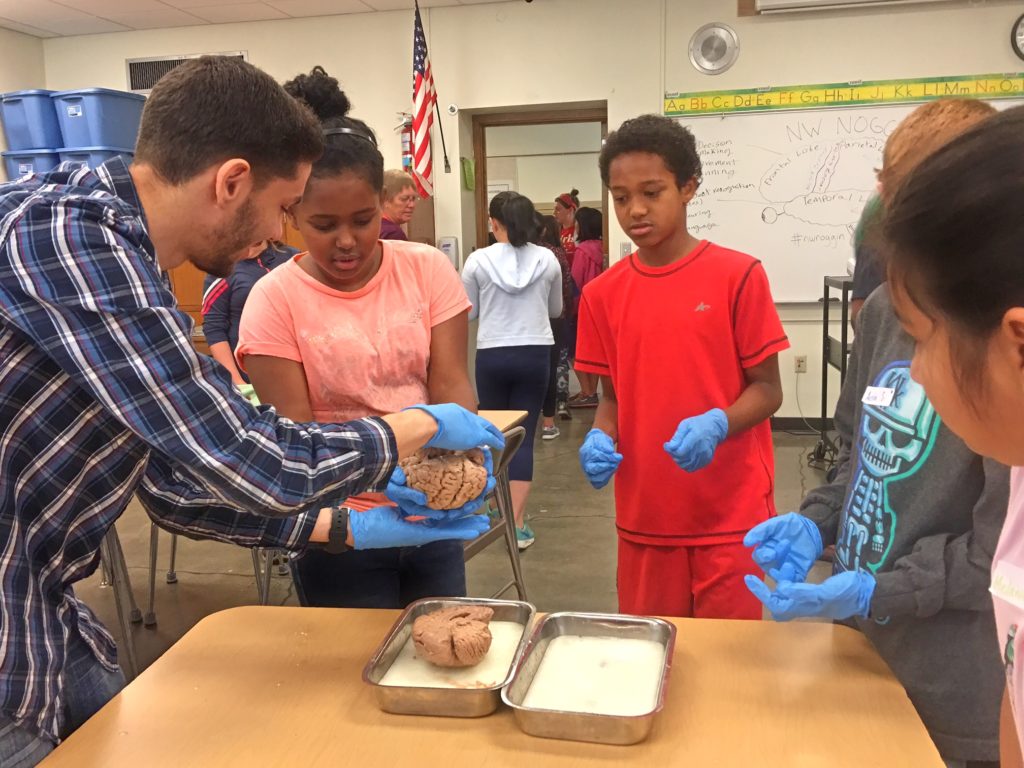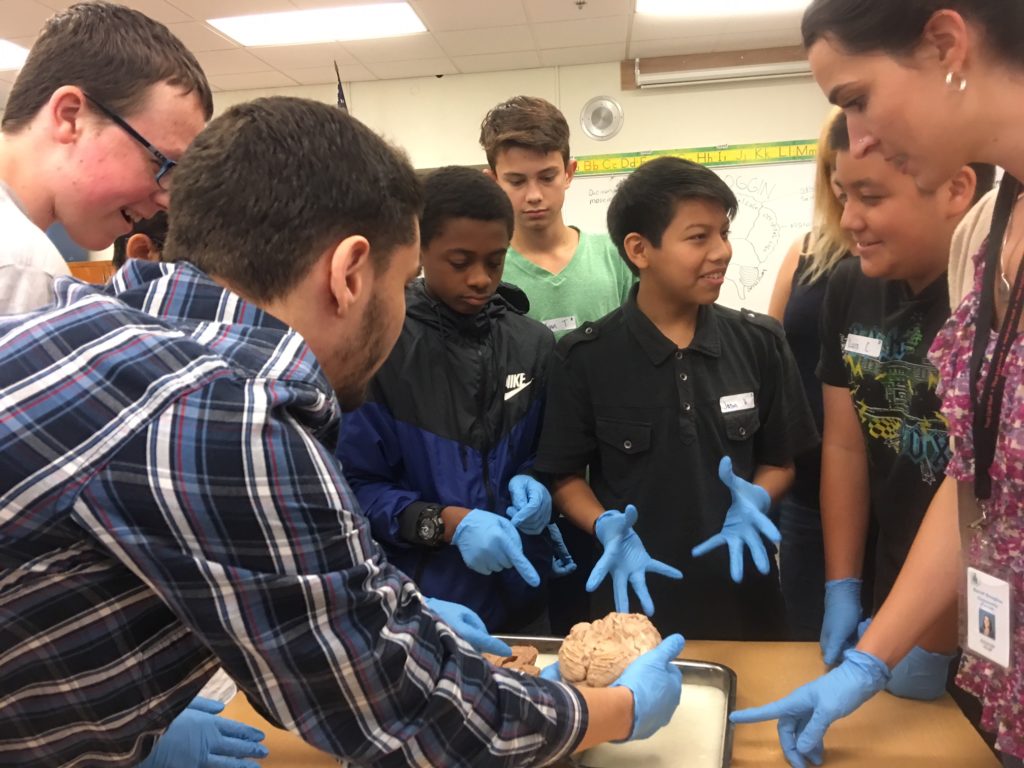We enjoyed some post-Fourth neural fireworks today at Floyd Light Middle School in the David Douglas School District, where middle school students were playing “brain games” this week through Multnomah County’s Schools Uniting Neighborhoods (“SUN”) summer program…
Noggin volunteers included Erin McConnell, Alex Voigt, Gaile Parker and Lynette Wolf from Portland State University, and Joey Seuferling from WSU Vancouver…
We discussed many topics during two, 75 minute sessions, including visual perception, synesthesia, drug dependence, and the necessity of social errors and “mistakes” for normal development. We also explored how individual neurons carry information electrically, and then communicate with each other across gaps, or synapses, using chemicals called neurotransmitters…
PSU Psychology graduate student Erin McConnell invited volunteers up to demonstrate this process. Students played the post-synaptic membrane of the receiving neuron, with velcro “receptors” to catch neurotransmitter released upon the pre-synaptic arrival of an action potential!
WATCH: Electrochemical transmission at a synapse
We also talked about the challenges that come with middle school, and the changes that brains go through in adolescence, including a dramatic loss of neurons, and the fine tuning of frontal lobe synaptic connections as you develop more complex skills and behaviors through classrooms, social life, sports, music, video games, language and play…
In addition, we emphasized the excitement and opportunity of this period of development, and some strategies for dealing with the inevitable conflicts, stresses and emotions in a healthy way…

It may seem counter-intuitive, but the volume of “gray matter” (i.e., the number of neurons, and number of synaptic connections) actually drops in more anterior areas of the brain, including the frontal lobes, during this often tumultuous period, as your neural wiring grows more specialized and efficient for activities and behaviors you actually pursue. If certain brain circuits aren’t used, they aren’t needed: a.k.a., “you use it or you lose it…”
EXPLORE MORE: Is more grey matter always associated with better performance?
Students enjoyed energetically asking questions (many knew quite a bit already!), playing with our cerebral models, and representing their own creative interpretations of what large regions of their cortex (including the frontal, parietal, occipital and temporal lobes) do, functionally, through drawings…
And of course we also looked at real human brains!
Many thanks to Lauren Letsinger, the SUN Youth and Families Specialist at Floyd Light, and Madeliene Hernandez, the Program Manager at SUN Community Schools, for welcoming us to summer school!


























